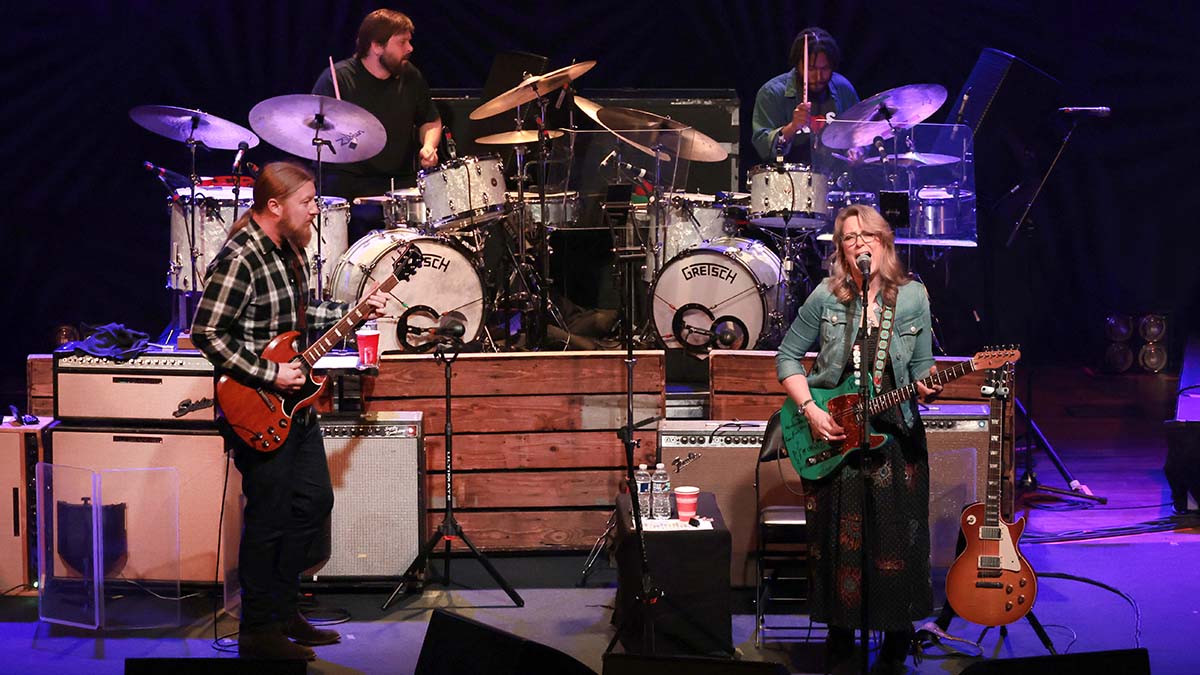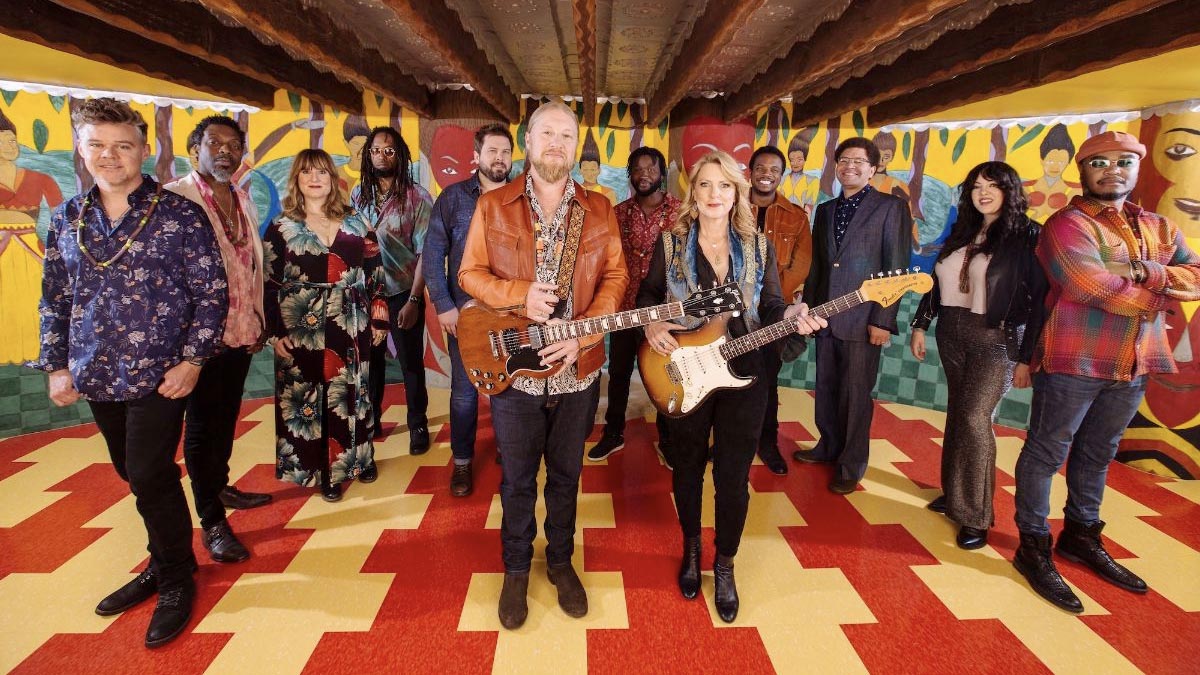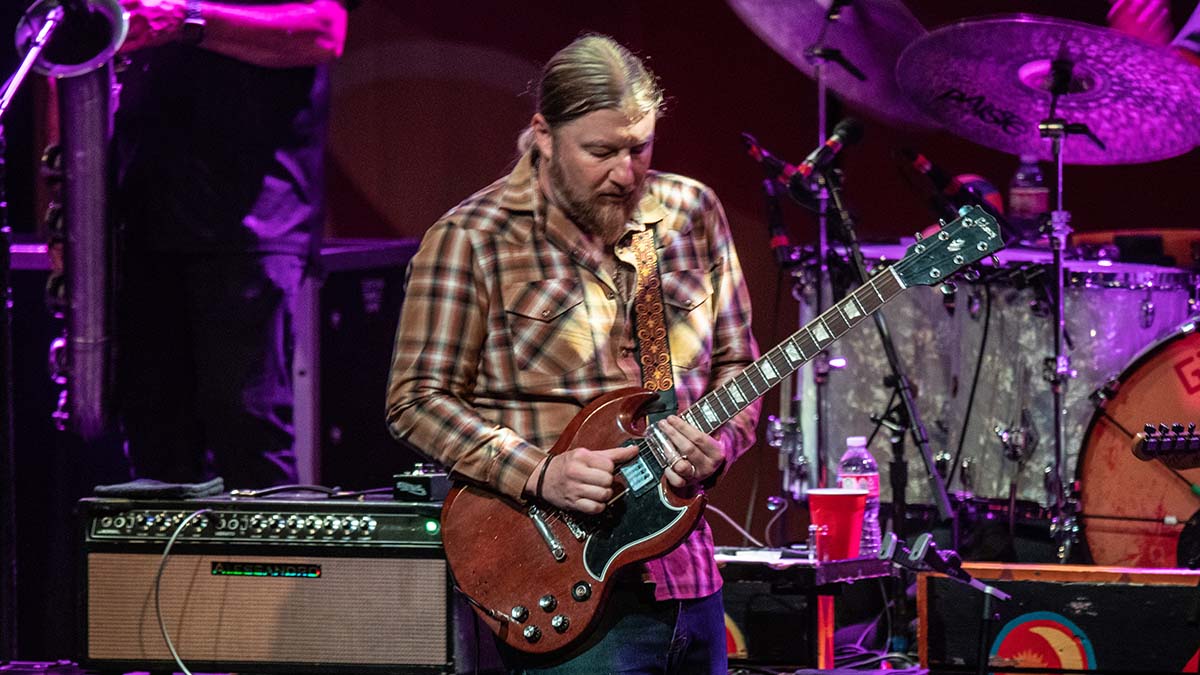Derek Trucks: “Slide playing is all about intonation – how you attack a note affects whether it sings or not”
The guitar maestro unpacks the story and influences behind Tedeschi Trucks Band’s epic quadruple-album I Am the Moon, and explains why slide guitar is a process of self-discovery

On the new Tedeschi Trucks Band album I Am The Moon: I. Crescent – the first of four themed albums released this summer – there are moments that could very well document Derek Trucks at his world-beating best.
Widely considered to be the finest slide player to emerge since the likes of Duane Allman, Sonny Landreth and Ry Cooder, the 43 year-old Trucks is still finding new ways to make his guitar speak. These latest recordings with the Grammy-winning 12-piece band he leads alongside his guitarist/vocalist wife Susan Tedeschi are evocative in a way that can transport the listener to different times and places.
Take 12-minute instrumental Pasaquan, for example, which reveals a distinctly edgier and moodier player than the Southern rock poster boy most of us are familiar with, and stands as the definitive guitar hero moment on this first chapter of the I Am The Moon series.
Talking to Total Guitar from his home on a typically balmy Floridian summer’s day, Derek explains how it was The Allman Brothers Band – the very group he was recruited by at the end of his teens – who inspired this wildly intense musical direction, with angular dissonance in place of his signature seductive sweetness.

“I mean, shit, we were all in a different headspace, right?!” he laughs when he considers how the I Am The Moon concept came together during the pandemic. “Instead of our usual life on the road, we’d been locked away at home thinking ‘Let us out!’
"Mountain Jam by the Allman Brothers was a big influence on Pasaquan. We would save it for the end of the day when everyone was warmed up. We’d take stabs and see where it took us. Some days it would be 10 minutes long, other days it would be 25. It just depended on the energy in the room. We didn’t want to beat it to death. We never did more than one take at a time. We all knew we’d get there when the spirit was right.”
Even those old Delta guys, when they were trying to call and answer with a voice, it would usually be one string
Derek’s main electric guitar for the sessions was the number one that’s almost singlehandedly soundtracked the last decade of his career – a cherry red Gibson SG modelled on the 1961 original given to Duane Allman by bandmate Dickey Betts. The Custom Shop replica (Artist Proof #4) was gifted to Trucks by Allman’s daughter Galadrielle in 2011.
Get The Pick Newsletter
All the latest guitar news, interviews, lessons, reviews, deals and more, direct to your inbox!
As with a lot of his favourite SGs and guitars in general, it’s “super light in weight” – Trucks reasoning that drier and more porous woods result in instruments that resonate better. The same goes for acoustics, he nods, as it’s “the paper light ones” which, at least to his ears, fill rooms best...
“Sue brought a lot of different electrics,” he says, “and we both used quite a few acoustics like an old Roy Smeck model plus some Dobros and Nationals, but I just stuck with that [Dickey Betts] SG, although for the instrumental I used an old ES-335 from 1965, which I tuned down to a looser open B instead of open E.
“Listening back I noticed my vibrato was a little swirly at times because of the different tension. Most of the record was done through an old Fender Deluxe, and I’d occasionally run an Echoplex through an old Supro as well, depending on how much dirt I needed. For a couple of tunes I took a Super Reverb into the middle of the room and dimed it, which is always fun!”

And on other occasions, he obtained his gargantuan tones through running lower watt combos at quieter levels. What works best in the studio, he remarks, can be very different to what he might use live.
“Some of the biggest sounds actually came from this tiny Tweed Deluxe on three,” he reveals. “There was something about the tone that totally barked. When you go back into the control room, quite often it’s those tiny amps that sound biggest. Live is a totally different beast. I have Duane Allman’s 50-watt Marshall [as used on the Allman Brothers Band’s classic 1971 live album At Fillmore East], and it sounds incredible.
“But it’s hard to make it sound the same on the record as it does in the room. It’s almost like the bigger the sound in the room, the smaller it sounds through speakers in the control room. That’s something you are always balancing: how it sounds on the floor and how it sounds later.”
While he has a long list of slide heroes – describing “the early Bukka White recordings specifically from 1928 to 1932” as his regular go-to for musical inspiration – there’s also a discernable Eastern twist to a lot of Derek’s classic leads.
At times he’ll stay on one string and cover as much distance as possible, giving a philosophical sense of motion to the music that wouldn’t be quite the same if he was making life easier for himself on different strings.
These ideas, he explains, were learned from sarod player Ali Akbar Khan and the time he spent studying at the late Indian classical virtuoso’s music college in California...
Playing on one string can almost emulate the human voice. A lot of that came from hearing Ali Akbar Kahn on the sarod
“Playing on one string can almost emulate the human voice, I think,” he smiles. “A lot of that came from hearing Ali Akbar Khan on the sarod. He’d hit a note and travel all the way up that fretboard – or steel plate, in his case. The first time I realised you can do that on a fretted instrument was through the great Indian mandolin player, U. Srinivas.
“He’d just be flying around, almost leaving you wondering whether it’s intentional! Those two musicians really set the light bulb off for me. And even those old Delta guys, when they were trying to call and answer with a voice, it would usually be one string. The more you do it, the more you know what feels right.”
So what else can be learned from the man generally considered to be the greatest slide player on earth?
When we ask about the secret to playing with all that emotion and power, and the advice he has to offer those of us trying to get anywhere close to his magical sense of feel, he once again points back to the early blues innovators and Hindustani raga concepts, which despite being worlds apart geographically, often share Mixolydian themes. But be warned – there aren’t any back doors when it comes to the general fundamentals of this sacred art form...
“Slide playing is all about intonation, which only comes through time,” he says. “You can’t skip over those things. When I feel like I’m not where I need to be, I’ll check in with players like Elmore James or Son House to remind myself. Through them I learned how you attack a note affects whether it sings or not, which can change whether people want to hear it. If you bring them in with a beautiful emotion from the beginning, you can dig in and take it anywhere.
“You just need to start and end well. You need an entrance and an exit – you’ll be forgiven for a lot of what happens in the middle! You might have this phrase and then need to find ways to get in and out of it.
“You find different cornerstones in this thing you’re building. You go off and explore, and then come back home occasionally. That’s an Indian classical concept, where somebody improvises and then comes back to the melody with everyone else, before it’s someone else’s turn to run with it.”
Equally as important as your note choices, he adds, is your vibrato. Few would disagree with him there – it’s one of the most defining elements of any lead guitarist, arguably even more so when slides are involved.
Just search through any of the YouTube playlists compiling Trucks’ greatest live solos, of which there are many, and you’ll find moments where he attacks one note with as much fury as he can muster and ride it out for as long as possible.
There are moments where I’m not really sure what I’m doing. I often see videos of myself and think, ‘What the f*ck, how did you get there?!’
“Vibrato is really where you hear someone’s personality,” he says. “I remember my dad taking me to see players like BB King and we’d just listen to him shaking out one note for ages. You could hear his life story in that vibrato. It was exactly who he was. And yeah, some of the best moments are where you pin one note and just sting it! It can be either uncomfortable or incredible. You have to play about with the tension.

“It’s the threat of tension and release that works as the payoff. There are moments where I’m not really sure what I’m doing. I often see videos of myself and think, ‘What the f*ck, how did you get there?!’ But it seemed right at the time. Everyone will be waiting for these moments to happen and you have to find different ways to get there. They might not always work but you have to try!”
And, of course, there are some occasions where the rules were made to be broken. Just listen to John Lee Hooker, if you’re ever in doubt.
“Some of my favourite John Lee Hooker recordings aren’t actually a 12-bar blues,” Derek concludes, “it’s more of an 11 or 13-bar blues, with the changes going wherever John said they should go, making it up as he went along. I’ve always loved that sense of freedom.”
- I Am the Moon is out now via Fantasy, and as a deluxe four-LP box set.
Amit has been writing for titles like Total Guitar, MusicRadar and Guitar World for over a decade and counts Richie Kotzen, Guthrie Govan and Jeff Beck among his primary influences as a guitar player. He's worked for magazines like Kerrang!, Metal Hammer, Classic Rock, Prog, Record Collector, Planet Rock, Rhythm and Bass Player, as well as newspapers like Metro and The Independent, interviewing everyone from Ozzy Osbourne and Lemmy to Slash and Jimmy Page, and once even traded solos with a member of Slayer on a track released internationally. As a session guitarist, he's played alongside members of Judas Priest and Uriah Heep in London ensemble Metalworks, as well as handled lead guitars for legends like Glen Matlock (Sex Pistols, The Faces) and Stu Hamm (Steve Vai, Joe Satriani, G3).
Ozzy Osbourne’s solo band has long been a proving ground for metal’s most outstanding players. From Randy Rhoads to Zakk Wylde, via Brad Gillis and Gus G, here are all the players – and nearly players – in the Osbourne saga
“I could be blazing on Instagram, and there'll still be comments like, ‘You'll never be Richie’”: The recent Bon Jovi documentary helped guitarist Phil X win over even more of the band's fans – but he still deals with some naysayers











